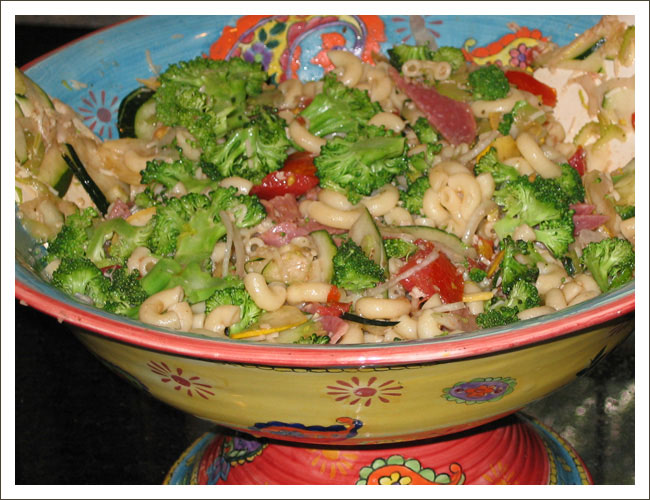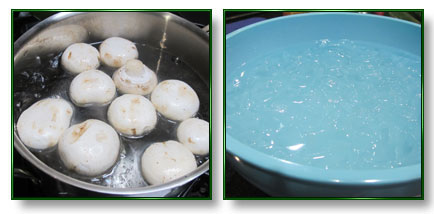Ever wonder why the vegetables you get in fine restaurants are always so vibrant-looking? The secret is blanching.

You know how you learn certain things at certain ages? You learned to tie your shoes before kindergarten, you learned to drive a car in high school, you learned to yodel before your 30th birthday (or maybe not). I’m not sure how it escaped me, but I didn’t learn about the joys of blanching until about a year ago. Perhaps you are in the same boat.
 What is blanching? It involves plunging a fruit or vegetable into boiling water for a very short period of time (anywhere from 30 seconds to 3 minutes), then immediately submerging it into an ice bath. Kinda reminds me of the spa at the Four Seasons in Las Colinas where you soak in a blazingly hot jacuzzi for a while, then step into the cold dip. I didn’t realize that I was blanching myself when I followed that procedure. The big difference, of course, is that I screamed when I did it, and veggies and fruits generally keep quiet. I’m told it’s good for my circulation. It is certainly a shock to the system.
What is blanching? It involves plunging a fruit or vegetable into boiling water for a very short period of time (anywhere from 30 seconds to 3 minutes), then immediately submerging it into an ice bath. Kinda reminds me of the spa at the Four Seasons in Las Colinas where you soak in a blazingly hot jacuzzi for a while, then step into the cold dip. I didn’t realize that I was blanching myself when I followed that procedure. The big difference, of course, is that I screamed when I did it, and veggies and fruits generally keep quiet. I’m told it’s good for my circulation. It is certainly a shock to the system.
Nothing is more disgusting-looking than broccoli that has turned a sickly yellowish-green color. It screams “I’m overcooked and have almost no nutrients left in me.” One look tells you it wasn’t blanched. It’s sort of like seeing a vegetable’s panty lines.
Why blanch?
- To preserve the color and freshness
- To easily remove the peel from peaches, garlic, tomatoes
- To keep them tasting fresher for a longer period of time
- To keep the vitamins intact, particularly if you are going to can, freeze, or dry them
- To destroy enzymes that would cause the fruit or vegetable to decay
- To allow the item to cook more quickly later, avoiding scorching or overcooking
- To reduce the amount of time you have to heat them and the amount of oil you might otherwise use
- To remove the “whang” (I have never typed that word before, and I have no idea how to spell it, but you know what I mean — the sometimes offputting taste of foods like cauliflower)
- To allow the vegetable or fruit to hold the essence of dressing better
- To remove excess water from vegetables that have a high water content, so you end up with more concentrated taste
- To remove some of the crunch of vegetables — just enough to take them from “hard” to “lovely”
- To jumpstart a stir fry by having the vegetables partially cooked
Because dressings are held more easily, the flavor builds quickly. Chef George Stella told me that if you make marinated mushrooms without blanching the mushrooms for 30 seconds or so first, it will be a full 24 hours before they really taste their best with the marinade. If you blanch them first, the mushrooms acquire a great taste from the marinade in just two hours!
Don’t get carried away. Too much blanching is not a good thing. Consult pages 3 and 4 of this fabulous chart from Iowa State University’s Extension service for the amount of time to blanch. This chart was designed for freezing, but it reflects which fruits and vegetables should be blanched first and how long to blanch them.
Go forth and blanch!


Leave a Reply